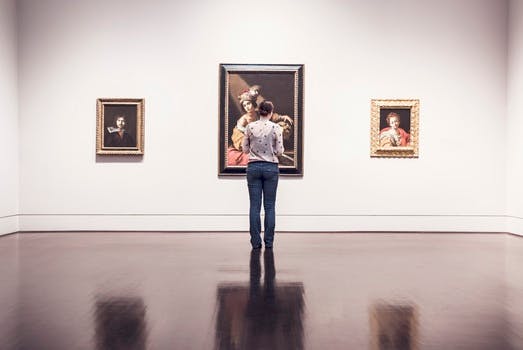

Collectors of fine art are advised not to think of their collections as investments, but collectors cannot ignore the value of their art portfolio, nor should they fail to consider what will happen to the artwork when they are not around to appreciate it. And as the art portfolio grows in value, whether through acquisitions or the artist's ascent in popularity, it may become a significant asset that has an impact on heirs financial and tax lives. Heirs who may not appreciate the art collection as much as their parents or grandparents do may see the artwork only as a tax burden. How can you best manage estate planning when a substantial proportion of the assets are art?
There are special art advisers who handle the tax and finance issues that arise in estate planning and philanthropy, according to The New York Timesarticle, "Estate Planning Can Get Tricky When Art Is Concerned." These professionals focus on tax and legal concerns that a valuable art collection raises, serving a highly specialized area that is considered a niche within a niche. It should be noted that these individuals are very different than the more commonly known art advisers who help clients acquire artwork, helping create a collection that fulfills their client's aesthetic goals.
Because it's tough to put a price on art, that can work to investors' favor when doing estate planning. While it isn't an asset that's going to solve lifestyle or retirement goals, it has a distinct advantage as a wealth-transfer tool. If you'd like to pass your Monet to your kids, it's better if it's valued as low as possible because transfers to heirs are taxed at high rates in many countries (but the dollar figure usually has to be pretty big for the tax to kick in). Use an independent appraiser and remember that rules on valuation and tax treatment vary from country to country.
A lack of liquidity can help in estate planning, but it can also hurt. When you sell your stock, the transaction is recorded in a public market, but when you give that Picasso to your lucky kids, it may create a taxable event which will one day catch up with the new owners.
Transference of property should be documented properly to avoid major issues down the line.
Financial planning for collectors can involve certain techniques for transferring ownership of art without transferring the art itself. For example, collectors can sell art to heirs for cash or a promise to pay—or place it in a trust or similar entity like a corporation—then lease it back. These strategies can have tax advantages, but are based on the laws of the state and country. Experts say that without the leasing agreement, these types of arrangements may not survive scrutiny by the tax authorities.
Trusts or corporations can also help collectors and their heirs avoid what the article calls "tragically bad luck" as many tax codes say that the property is subject to estate tax wherever it is situated when the owner dies. So if an asset is located in the U.S. but you're not a U.S. taxpayer, when you die it will be subject to U.S. estate tax because it's physically here. Good planning can avoid such a result.
Collectors wanting to donate to a charity and get a tax break while maintaining ownership of a piece of art (at least for a while) may be able to lend the work to an institution or remain a part-owner and donate the rest. Under American law, a collector can allow the institution to use the artwork for part of each year and take a prorated charitable deduction based on its value. However, the collector has to give away the artwork entirely within 10 years or at death, whichever comes first. The tax deduction is based on the value then or when the fractional interest was donated, whichever is lower. And penalties are due if deductions are found to have been excessive.
Talk to your estate planning attorney if you have some Picassos or Monets that you plan to give to your children. He or she will be able to work through the details and make sure it's done legally and with the least amount of tax impact.
Reference: The New York Times (October 3, 2015) "Estate Planning Can Get Tricky When Art Is Concerned"
For more information click on: www.epllc-plc.com

